:: a photo essay about sericulture, part i ::
The fancy word for raising silkworms and making silk is sericulture. This is not a common hobby in the US, which is partly why I am into it. I’m sure you know that the secrets of making silk originated in the Far East and came to the Western world pretty recently, in the grand scheme of things. Even though the process of making silk is no longer a secret, few people are interested in actually doing it for two main reasons:
1. It is labor intensive.
2. It involves bugs.
Never fear. In order to give you a close-up view of what sericulture is all about, I have taken the hard work and bugginess on myself. All you have to do is sit back and enjoy the picture story.
 So here’s the start. These are silkworm eggs. They’re very small! To hatch them, you can use an incubator or go low-tech as I tend to do. Place them on the bathroom counter and turn the shower on full blast to fill the room with steam. Free incubator. You’re welcome! Fair warning though, you have to do this a few times a day for about a week so it’s not for everyone. For example, people who don’t like mildew all over their walls, it’s not for them. Or people who have to go to work all day and can’t be home to steam up the room. It’s not for them. Or people whose spouses have a need to “see themselves in the bathroom mirror” or have “usable counter space.” It’s not for them, either.
So here’s the start. These are silkworm eggs. They’re very small! To hatch them, you can use an incubator or go low-tech as I tend to do. Place them on the bathroom counter and turn the shower on full blast to fill the room with steam. Free incubator. You’re welcome! Fair warning though, you have to do this a few times a day for about a week so it’s not for everyone. For example, people who don’t like mildew all over their walls, it’s not for them. Or people who have to go to work all day and can’t be home to steam up the room. It’s not for them. Or people whose spouses have a need to “see themselves in the bathroom mirror” or have “usable counter space.” It’s not for them, either.
Check this out! A tiny, tiny caterpillar baby in the act of hatching from its egg. These are often referred to as keggos, which is a Japanese word meaning ‘hairy baby.’ I didn’t make that up. If I made up a Japanese word for baby silkworms, it would translate to ‘small thing that eats as much as an elephant, if we had elephants in Japan.’
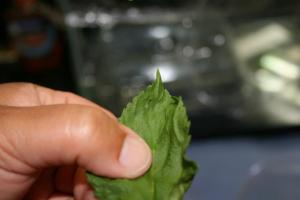 Can you spot the keggo on this mulberry leaf? They are incredibly tiny at this stage. But they grow quickly…
Can you spot the keggo on this mulberry leaf? They are incredibly tiny at this stage. But they grow quickly…
Silkworm caterpillars go through 5 instars or growth stages. That means they molt and grow four times between hatching out of the egg and spinning a cocoon. For scale, I should mention that these cats are shown on a child’s hand.
Here are some very hungry caterpillars having lunch. This type of silkworm, Bombyx mori, does not exist in the wild and eats only mulberry leaves. That was an awkward sentence full of extra facts I thought you should know. Author’s note: inserting awkward sentences containing extraneous information is the mark of a good writer.
After the fifth instar, the caterpillar is ready to pupate (turn into an adult). For this, it needs a cozy cocoon.
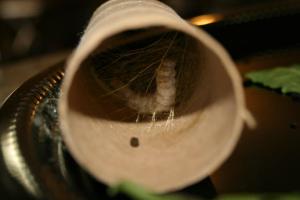 Here’s a cute silkworm spinning its cocoon in a toilet paper roll. If you let the caterpillars spin any old place, the cocoons will get stuck together, or two cats will spin a joint cocoon, or the cocoons will be misshapen. So we provide something like a toilet paper roll or a dixie cup to keep things neat. The brown spot in the foreground of the photo is frass, which is what you call caterpillar poop when you’re feeling scientific.
Here’s a cute silkworm spinning its cocoon in a toilet paper roll. If you let the caterpillars spin any old place, the cocoons will get stuck together, or two cats will spin a joint cocoon, or the cocoons will be misshapen. So we provide something like a toilet paper roll or a dixie cup to keep things neat. The brown spot in the foreground of the photo is frass, which is what you call caterpillar poop when you’re feeling scientific.
 A beautiful golden cocoon, all finished. While in the cocoon, the caterpillar undergoes a mysterious transformation from cat to pupa to adult moth. I find it pretty amazing.
A beautiful golden cocoon, all finished. While in the cocoon, the caterpillar undergoes a mysterious transformation from cat to pupa to adult moth. I find it pretty amazing.
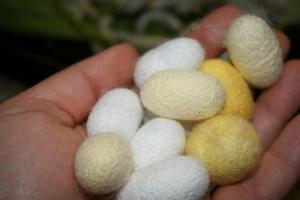 Cocoons come in a variety of colors, even pink and green. But you have to pay extra for those, so as you can see I am not holding pink and green in this picture. The color comes from sericin (silk protein) and it washes out when you process the silk. After rinsing, all the silk will be pure white.
Cocoons come in a variety of colors, even pink and green. But you have to pay extra for those, so as you can see I am not holding pink and green in this picture. The color comes from sericin (silk protein) and it washes out when you process the silk. After rinsing, all the silk will be pure white.
Incidentally, the silk gland itself is sometimes used to make fly fishing line. Out of curiosity, I pulled the silk gland out of one caterpillar and stretched it to make fishing line. I gave it to my brother, but I’m not sure if he ever used it. He’ll probably get around to reading this blog in about six years, so maybe he can comment then. Side note: if you ever start a blog, did you know that some people won’t read it? Even people who are related to you, such as your brother? I know, I find it surprising too!
You may not realize it, but this is a very special picture. You’re looking at a silk moth eclosing (coming out of its pupal casing). The special thing about it is that this usually takes place inside the cocoon, so you never see it happening. In this case, I carefully cut the cocoon open so we could see what was going on inside. Somehow the caterpillar turned into a pupa, and then turned into a moth, but you can still see some of the characteristics of the caterpillar body on the casing, and I can’t get over how MYSTERIOUS and AMAZING it all is.
As soon as the adult moth emerges, it gets down to business. Silk moths have a single focus once they’ve emerged from their cocoons: reproduction. They can’t fly, and they don’t have mouths so they can’t even eat. They’re all about mating, laying eggs, and dying. They emit a pheromone until a mate is attracted. The scandalous photo above shows two moths mating. The larger one is the female; her abdomen is already full of eggs awaiting fertilization. I probably should have asked permission before posting this online, but they seemed busy.
That’s it for Part I of our lesson in sericulture. Come back soon to see how the cocoons are processed into usable silk in Part II. I would like to give credit to Michael Cook at http://www.wormspit.com for teaching me how to raise silkworms. My posts are all about my own personal experience with silkworms, but this guy actually knows what he is doing. I would also like to give a shout out to my fabulous daughter who wrote a book about a silk farmer who solves a mystery and turns into a goose. It’s called The Silk Spinner and the Silk Stealer and you can check it out on amazon.


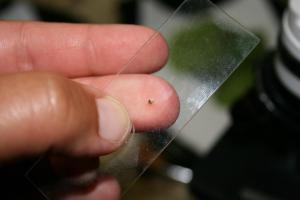

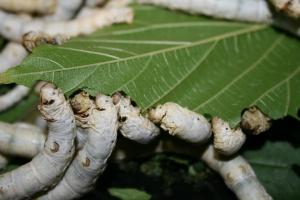




Love that Eve wrote and published a book! That’s awesome!
LikeLike
And I love reading your blog 🙂
LikeLike
I always read both your blog and my brother’s blog, FYI.
LikeLiked by 1 person
I think it is awful that dylan does not read your blog
LikeLiked by 1 person
Another mark of a good author is being able to use multiple “x” words in awkward sentences and in sentences about awkward sentences and even in the author’s note. 😄
LikeLike